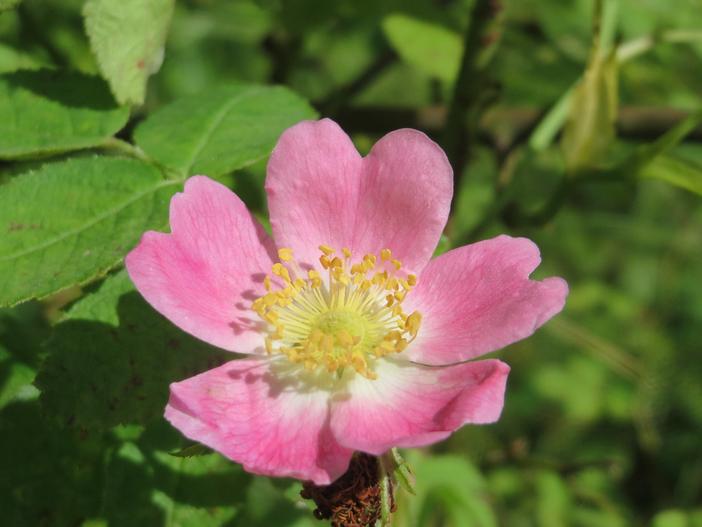Sweet Briar Rose
(Rosa rubiginosa)
Sweet Briar Rose (Rosa rubiginosa)
/
/

Andreas Rockstein
CC BY-SA 2.0







































































Estimated Native Range
Summary
The Sweet Briar Rose is valued for its scent, ornamental flowers, and hips. It is recommended for planting on the south or west side of a garden to carry the fragrance on warm, moist winds. This shrub is often used for hedging, in wildlife gardens, and as a source of rose hips for culinary and medicinal purposes. It thrives in full sun but can tolerate part shade, and it adapts to a range of soil conditions, from slow to fast drainage. While generally easy to maintain, it can be susceptible to common rose diseases such as black spot and powdery mildew. Gardeners should be aware that it can spread via seeds and root suckers, potentially becoming invasive in some areas.CC BY-SA 4.0
Plant Description
- Plant Type: Shrub
- Height: 6-10 feet
- Width: 6-10 feet
- Growth Rate: Moderate
- Flower Color: Pink
- Flowering Season: Spring, Summer
- Leaf Retention: Deciduous
Growth Requirements
- Sun: Full Sun
- Water: Medium
- Drainage: Fast, Medium, Slow
Common Uses
Bee Garden, Bird Garden, Butterfly Garden, Edible*Disclaimer: Easyscape's listed plant edibility is for informational use. Always verify the safety and proper identification of any plant before consumption., Fragrant, Showy Flowers
Natural Habitat
Native to open woodlands, grasslands, and forest edges in Western Europe
Other Names
Common Names: Sweet Briar , Sweet-Briar , Eglantine , Eglantine Rose , Sweetbriar Rose , Sweetbrier , Briar Rose , Mosqueta Rose , Wilderoos , Drysïen Bêr
Scientific Names: Rosa rubiginosa , Rosa eglanteria , Rosa grandiflora , Rosa gremlii , Rosa comosa , Rosa rubiginosa subsp. umbellata , Rosa rubiginosa subsp. rubiginosa , Rosa umbellata , Rosa rotundifolia , Rosa comosella
GBIF Accepted Name: Rosa rubiginosa L.